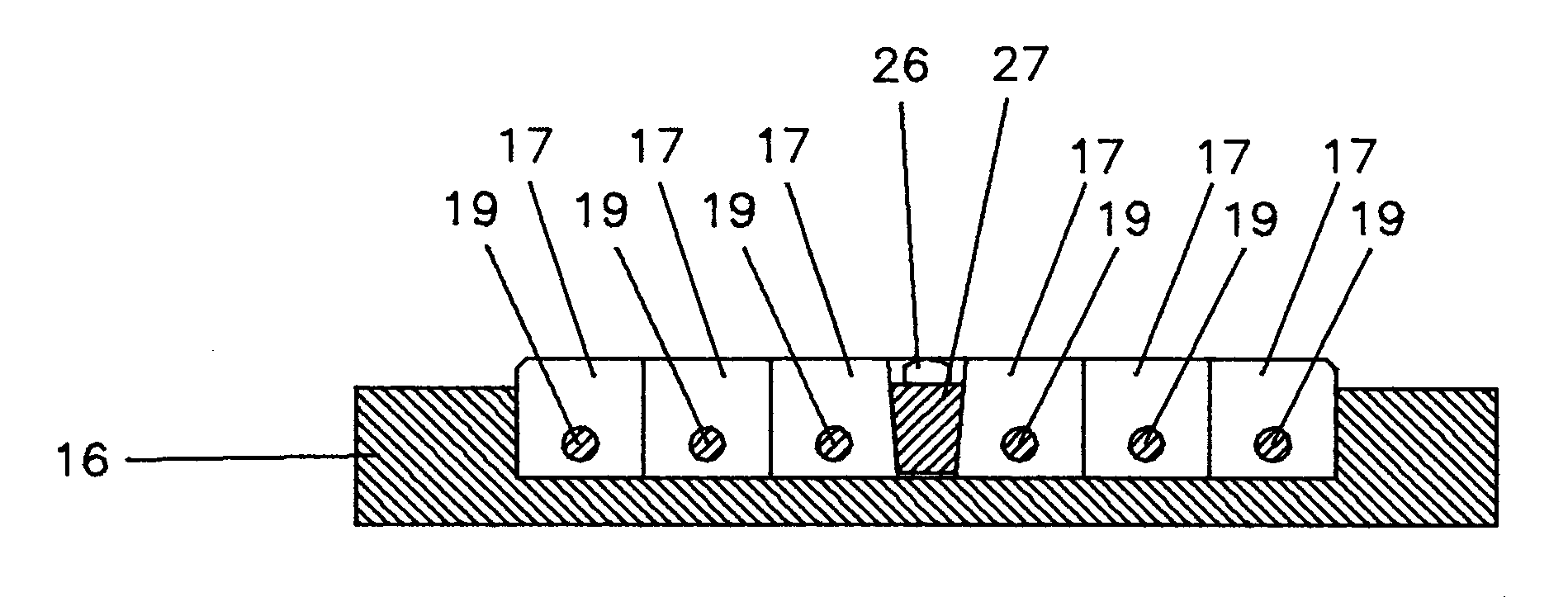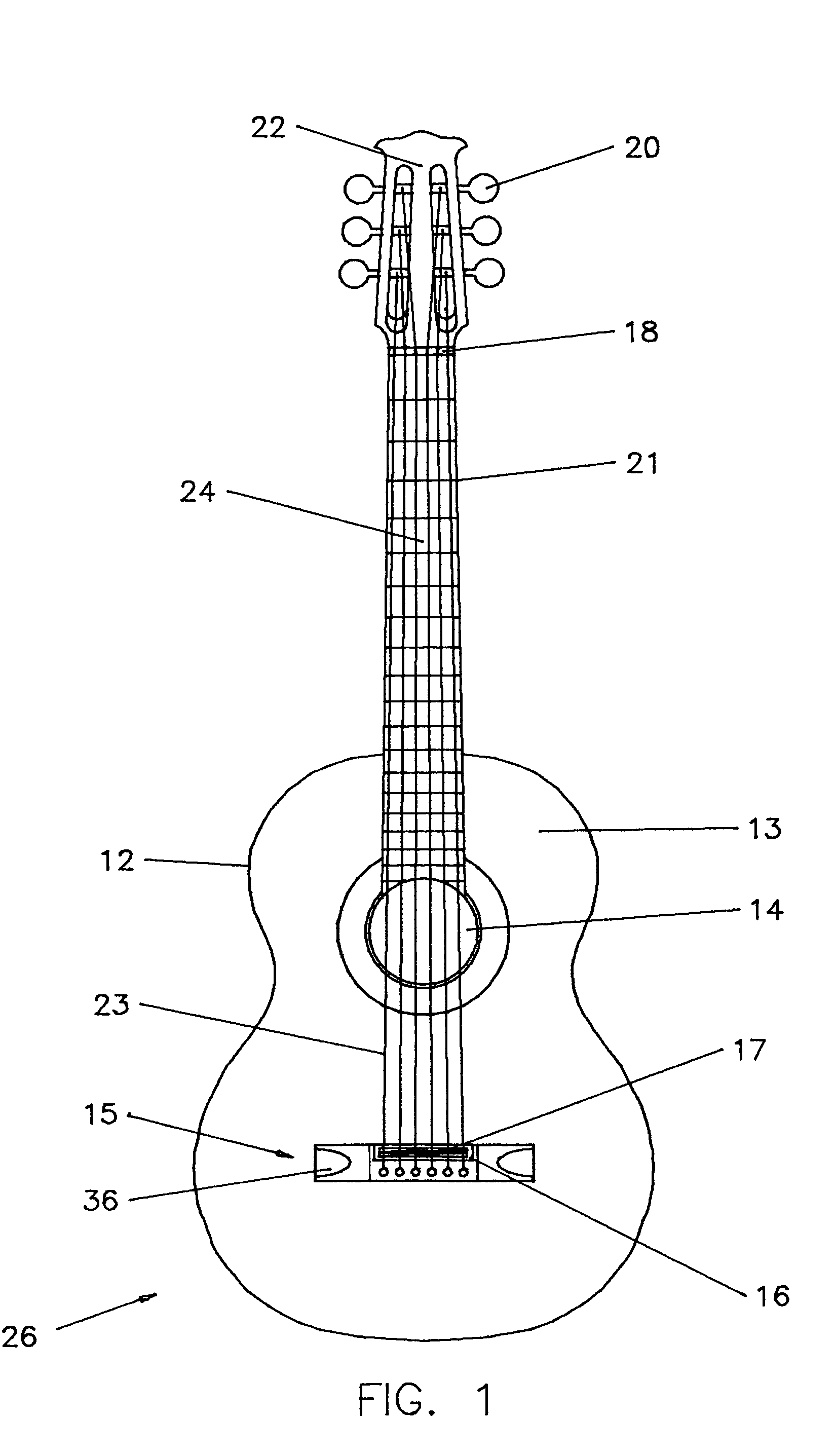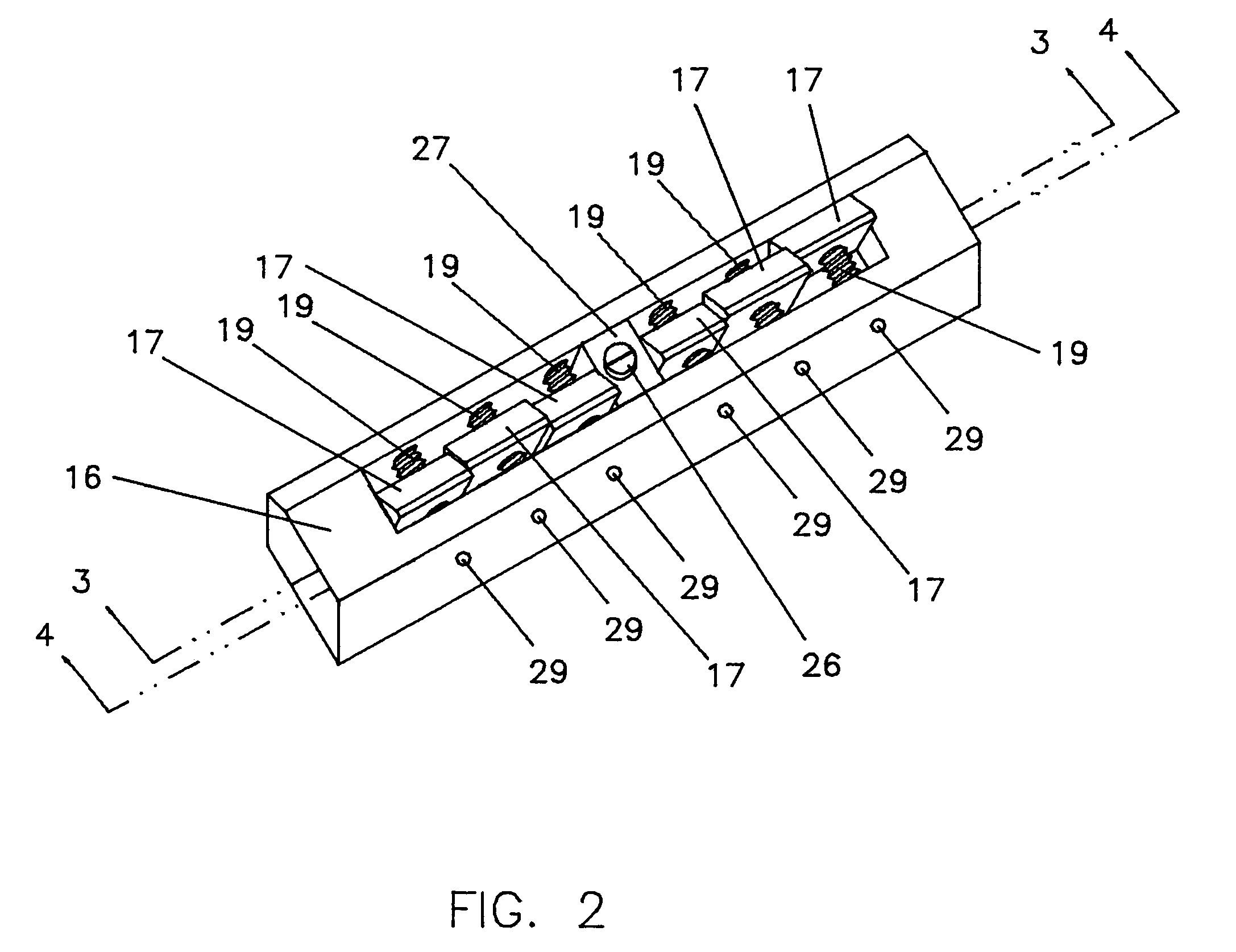Adjustable bridge for acoustic stringed instruments
a guitar and bridge technology, applied in the direction of instruments, motors/generators/converter stoppers, dynamo-electric converter control, etc., can solve the problems of instrument detune, instrument to be easily retrofitted, and rarely if ever achieve the precise degree of intonation. , to achieve the effect of conserving the sonority of the instrumen
- Summary
- Abstract
- Description
- Claims
- Application Information
AI Technical Summary
Benefits of technology
Problems solved by technology
Method used
Image
Examples
embodiment
Preferred Embodiment
[0043]FIG. 1 shows the basic configuration of a conventional steel sing flat top acoustic guitar 25 having a guitar body 12 having a top or sound board 13 on which is mounted a bridge 15 below the sound hole 14. Guitar strings 23 anchored in the bridge 15 stretch over the saddles 17, the resonant cavity, and on to the head 22 and tuning machines 20. A bridge 15 and a saddle housing 16 containing moveable saddles 17 is mounted on the top 13 of the guitar body 12. Upraised metal ridges called frets 21 are located at designated intervals on the fret board 24 perpendicular to the strings. A typical guitar has about 20 frets. The theoretical placement of the frets are located conventionally, being sequentially derived from the logarithmic decrement of the 12th root of 2 for the desired scale length.
[0044]FIG. 2 shows a front perspective view from above of the preferred embodiment of the invention. The bridge utilizes individual saddles 17 which are retained in positio...
PUM
 Login to View More
Login to View More Abstract
Description
Claims
Application Information
 Login to View More
Login to View More - R&D
- Intellectual Property
- Life Sciences
- Materials
- Tech Scout
- Unparalleled Data Quality
- Higher Quality Content
- 60% Fewer Hallucinations
Browse by: Latest US Patents, China's latest patents, Technical Efficacy Thesaurus, Application Domain, Technology Topic, Popular Technical Reports.
© 2025 PatSnap. All rights reserved.Legal|Privacy policy|Modern Slavery Act Transparency Statement|Sitemap|About US| Contact US: help@patsnap.com



